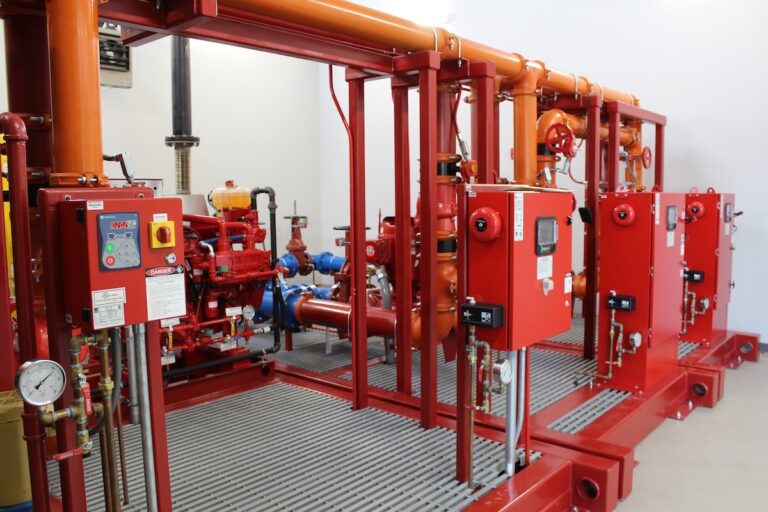Annual fire pump testing is essential for ensuring fire protection systems operate when needed. However, if the fire pump testing isn’t done correctly, it can pose serious risks to both the system and the property that the fire pump is designed to protect. There are multiple hazards associated with testing fire pumps.
One of the most common hazards during these tests is what’s known as “water hammer.” Water hammer refers to a sudden pressure surge that can cause significant damage to piping, fittings, and valves.
Understanding Water Hammer and Its Impact: How Does It Occur?
Water hammer occurs when a fire pump is abruptly shut down during a flow test while the discharge control valve is open. This rapid change in water movement can and will send shockwaves through the system, leading to pipe ruptures, leaks, and extensive water damage. In some cases, it can cause complete system failure.
To avoid these costly consequences, NFPA 25 allows the use of specific procedures that help mitigate this risk.
A Fire Pump Testing Best Practice For Field Techs: Ensure That The Control Valve Is Closed During Testing
One of the most effective ways to prevent water hammer damage is by ensuring the discharge system control valve remains closed during testing. Why? Making sure that the discharge system control valve is closed protects the system downstream from damaging pressure surges while still allowing for a proper evaluation of fire pump performance.
Failure to follow this best practice can result in extensive property damage, costly repairs, and unnecessary disruptions to operations.
How To Ensure Fire Pump Testing Best Practices Are Followed: Communicate the Best Practices of Fire Pumping Testing & The Costly Ramifications of Not Following Proper Procedures
The role of fire and life safety contractors extends well beyond performing tests. Contractors also are responsible for guiding building owners and facility managers on best practices for this annual testing procedure. Clear communication about fire pump testing procedures can help prevent system damage, reduce liability, and ensure compliance with NFPA 25.
For detailed guidance on this issue, Risk Suppression Partners insureds can log in to the Risk Suppression Partners website Customer Portal, where exclusive resources are available to provide guidance on proper, safe fire pump testing that prevents damage and reduces risk.
